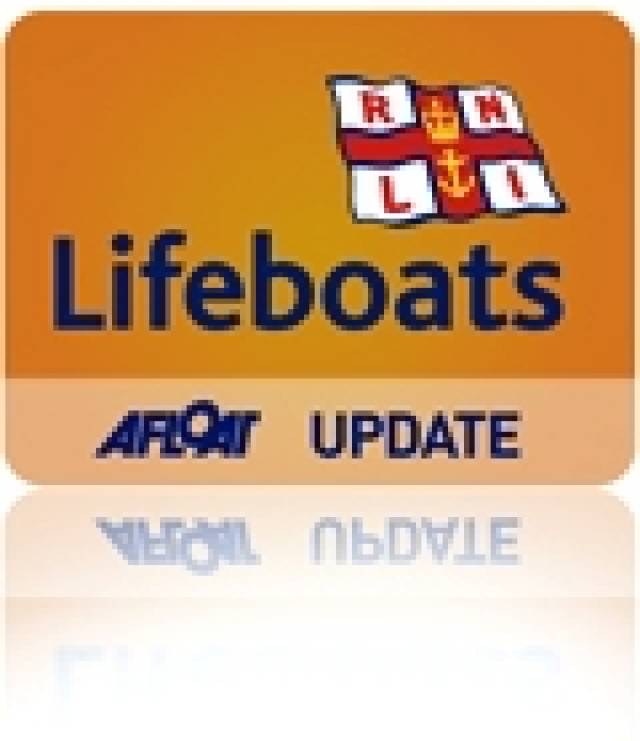Castletownbere RNLI will today officially open its new lifeboat station in west county Cork.
Afloat.ie correspondent Tom MacSweeney will declare the building open at a special ceremony beginning at 2.30pm which will include a service of dedication where the boathouse will be blessed and the official handing over of the station from the institution to Castletownbere RNLI.
The event will mark a significant milestone in the station's 16 year history as the new building and facilities will greatly enhance the operational capability of Castletownbere's all-weather Severn class lifeboat Annette Hutton, and support the crew in their work of saving lives at sea.
The volunteer lifeboat crew moved into the new station late last year after spending 15 years in temporary accommodation at Dinish Island.
The new station and pontoon has been built on reclaimed land in Castletownbere and the new location means that the lifeboat crew can respond to callouts even faster.
The entire project cost €950,000 and includes a two storey lifeboat station with an adjoining pontoon from where the station's Severn class all weather lifeboat launches. The station houses a crew changing room, RNLI shop, training room and an operations office.
The building was designed by Gordon Philips who has worked on seven RNLI lifeboat stations for the charity. Work on the lifeboat station was carried out by Castletownbere construction and the pontoon was constructed by Crowley Engineering in Cork.
The project was made possible by the provision, from the Department of Agriculture, Food and Marine, to the RNLI of a plot of reclaimed land on which the station was built. It has provided the lifeboat crew with the perfect location from which to launch.
Casltetownbere RNLI has launched 223 times since the lifeboat was first put on service. Its crews have rescued 288 people and saved 30 lives. Last year alone, the lifeboat launched 10 times, bringing 12 people to safety. Five of those services took place in the dark while the volunteer crew spent 258 service hours at sea.
Throughout its history, there have been a great variety of call outs - sometimes long in duration, sometimes brief. There have been moments of humour and occasionally tragic circumstances. Two particular rescues, undertaken in difficult circumstances received commendation from the RNLI's Operations Director Michael Vlasto. These included the rescue of a seriously injured fisherman on the Skellig Dawn in February 2002 and the rescue of the Saint Gothard in February 2007.
Back in August 2004, when the station's crew travelled to RNLI Headquarters in Poole to receive their Severn class all weather lifeboat, they brought the Queen who was officially opening the RNLI College for a trip around the harbour on their new lifeboat.
In July 2007, Castletownbere launched with their neighbours in Baltimore following reports of a capsized rib in heavy seas with one man missing. While the man was rescued by lifeboat crew, the call out turned out to be part of the biggest drugs seizure in the state making headlines across the world.
Speaking ahead of this afternoon's ceremony, Paul Stevens, Castletownbere RNLI Second Coxswain and Volunteer Lifeboat Press Officer said the opening ceremony will provide a special opportunity for the West Cork community to welcome the station's new home: 'Since Castletownbere lifeboat station was established in 1997, we have been very fortunate in the level of support we have received both locally and from further afield. We have dedicated lifeboat volunteers and supporters and now we have a station that reflects that. The official opening ceremony will give us the opportunity to thank all those who organised fundraising activities, events, contributed financially or helped in any way to get us to this point as well as allowing us to acknowledge and thank our crew both past and present.'
Among those who will join Tom MacSweeney in officiating at today's ceremony will be John Nolan, chairman of the Castletownbere RNLI Lifeboat Management Group, John Coyle, chairman of the Irish RNLI Council, Tony O'Sullivan, Castletownbere RNLI Lifeboat Operations Manager, Father Sean O'Shea, RNLI Chaplain and Reverend Paul Willoughby































































